
For the last decade or so, I’ve spent the better part of my time discovering and experiencing car culture around the world. It all began when I landed in Frankfurt airport and our taxi driver explained to me that it was mandatory to wear seat belts at all times while being in a car. The relative discomfort of wearing the seat belt quickly got replaced with the initial sheer terror as we drove up the on-ramp onto the autobahn for the first time in my life. I was instantly hooked to speed and everything else surrounding it. That experience on the autobahn moved the upper end of my hitherto spectrum of sensation of speed to an entirely new level. Now, you might be wondering what the autobahn has to do with the picture above. Let me take you for a drive…

I was born and raised in the south Indian state of Kerala up until the age of 15 when the decision was made to move to Germany. Until then, the fastest I had ever been in a motor vehicle was about 65km/h. This was the combined result of the state of the roads in India as well as the performance of the cars that were sold back then. There was no legal requirement to wear a seat belt and few cars came fitted with one. Owners often decorated the car with custom seat covers and ended up covering the seat belt receptacles, so even if the car came with them, they were unusable.

Things seem to be changing there now very quickly. The quality of the roads is improving and the automobile market has properly boomed, with nearly every global manufacturer having representation in the Indian domestic market. Amidst all this change, I thought I’d take you on a trip around town, old school style and to do that, I needed to get myself in character. First step, the car.
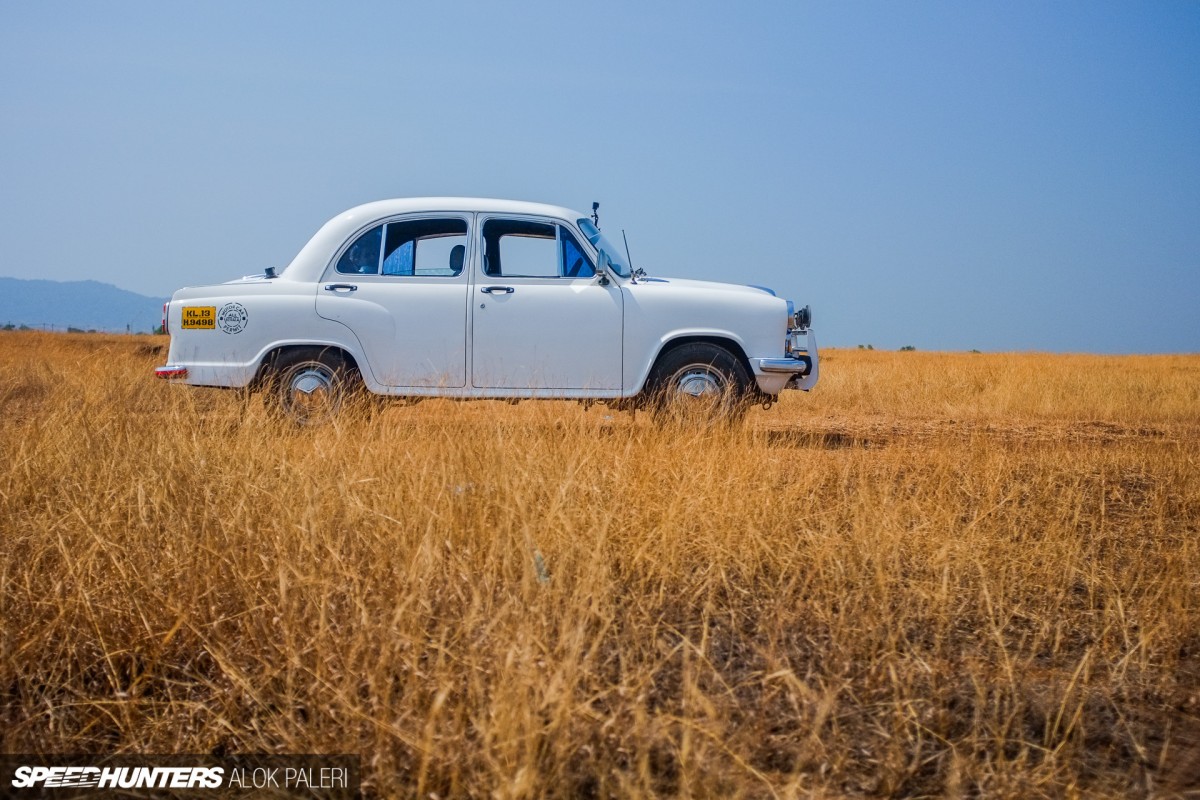
Back then there were only really two different kinds of cars on the street: the Maruti Suzuki 800 (based on the Suzuki Fronte) and this, the Hindustan Motors Ambassador. Hindustan translates to the ‘land of the Indus’ and is often used to refer to the northern Indian subcontinent. With a company name like that, Indians immediately identify with the brand as one of their own. The Ambassador, seen here in the Classic 2000 trim, packs about 50 horsepower from its Isuzu I4 engine, but since it’s not burdened with most modern luxuries, it weighs in at a claimed kerb weight of just 1200kg.
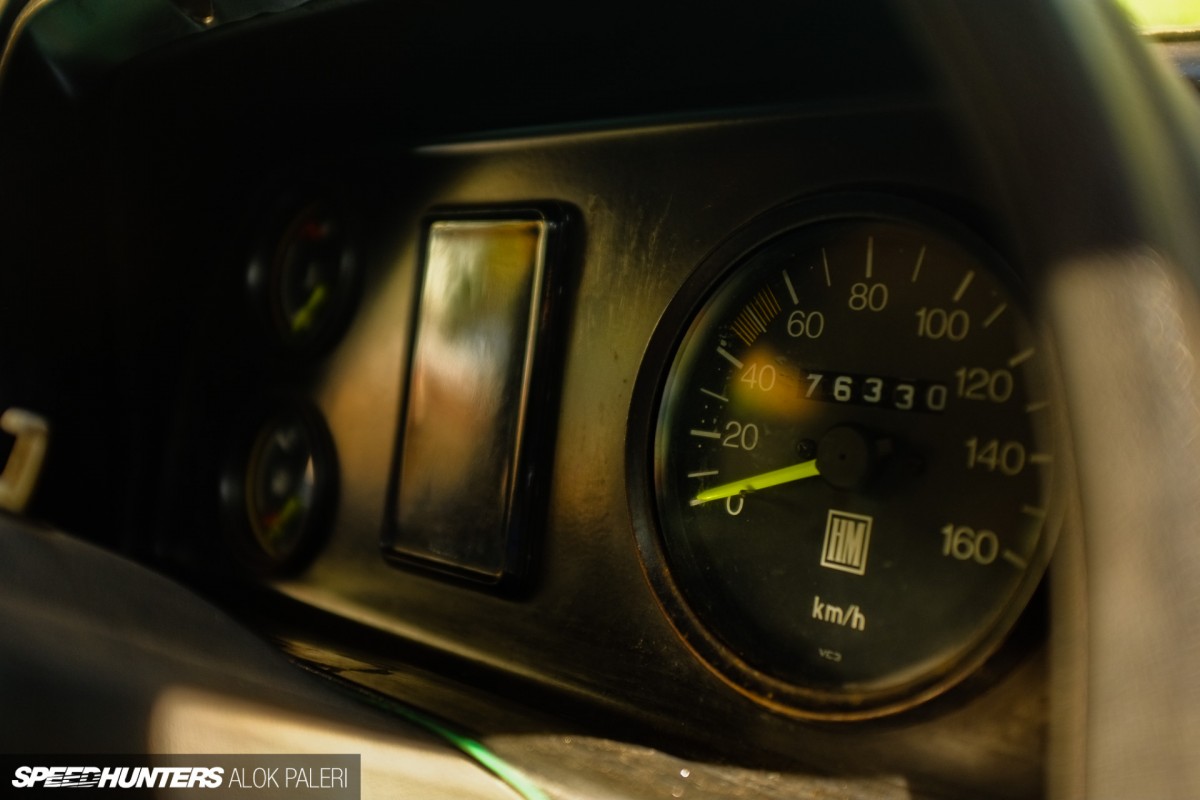
While comfort is the biggest selling point of the Ambassador, speed isn’t. The speedometer tops out at 160km/h but achieving even half that is nigh on impossible.

Based on the Morris Oxford from 1954, this car is still produced in India following generation after generation of minor tweaks and upgrades. Movie stars, heads of states, they were all seen being chauffeured around in Ambassadors. Put simply, at that time you either had an Ambassador, or you wanted one.

On my last visit to India a couple of weeks back, I acquired a ’93 model Ambassador Classic of a friend of mine and hit some of the routes that I used to frequent as a child passenger.
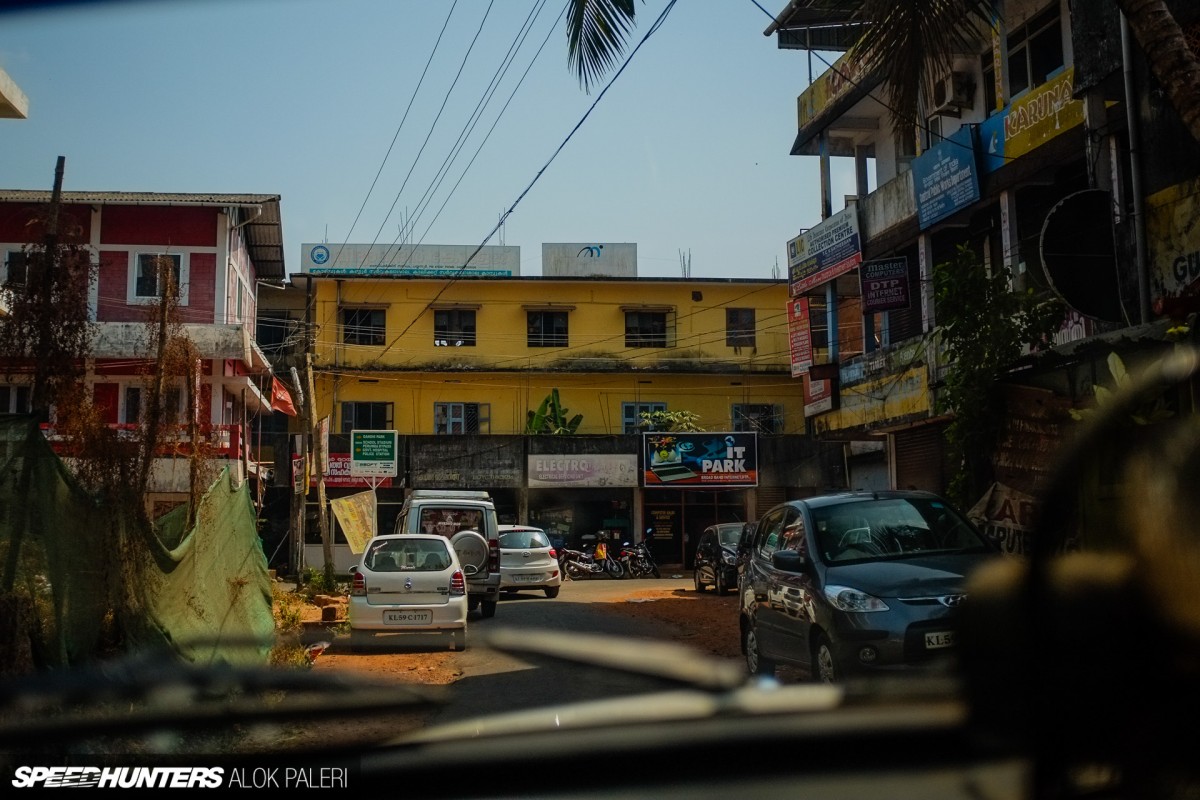
One of the first things I noticed as a revisiting adult is that the world seems to have shrunk, literally. Roads, alleys and junctions that seemed enormous as a child suddenly felt crowded and incredibly compact.

This feeling is aggravated by the fact that most of the roads are lined with compound walls and there are often no footpaths along the side.

I was headed towards the town of Payyannur in Kannur district and would take a round trip along the route that I used to take on my way to school and then further along the coast all the way back home.

Turns out a lot of things can change in a decade. With the number of cars sold multiplying each year, the need to widen roads arises – but sometimes you’re confronted with trees of historic relevance in the way.
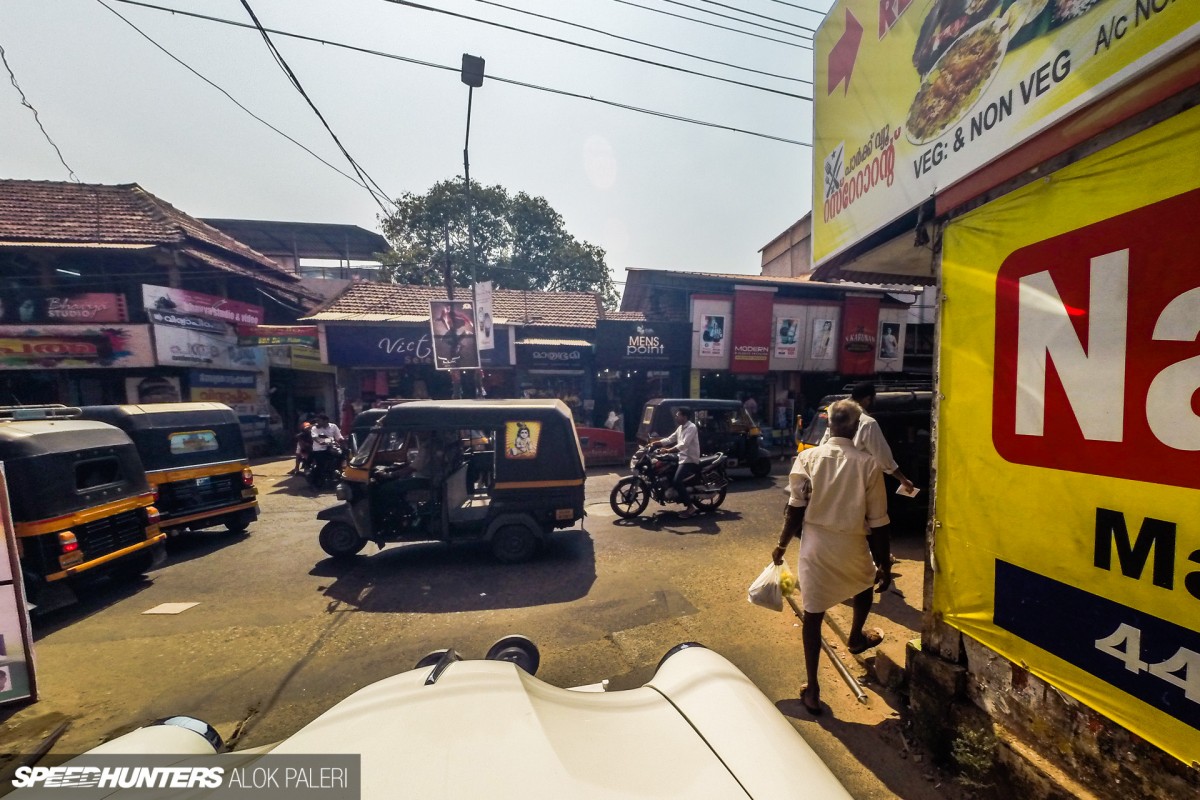
Often infrastructure wraps itself around a small road which makes expansion very difficult. In a town devoid of traffic lights, imagine trying to merge onto this street with a western driving mentality. I realized very soon that if I was to stand a chance of driving here, I’d have to perform some sort of hard reset on the part of my brain that deals with driving etiquette. And then just squeeze in.
Horns, horns and more horns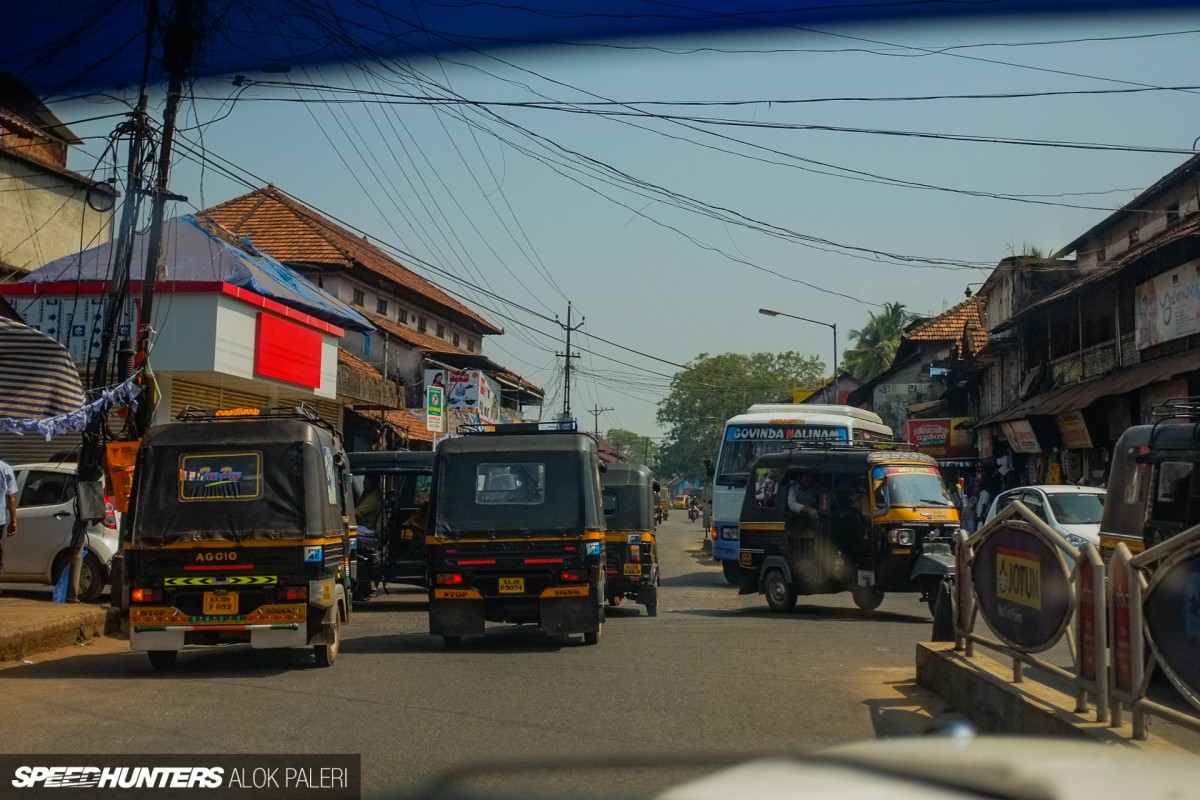
That’s when the second wave hits you: the horns. Drivers are so generous with that little button on the steering wheel that in the cities you never get even a moment’s break from the blaring of horns. My entire time in Germany, I might have used the horn on my car six, maybe seven times tops.
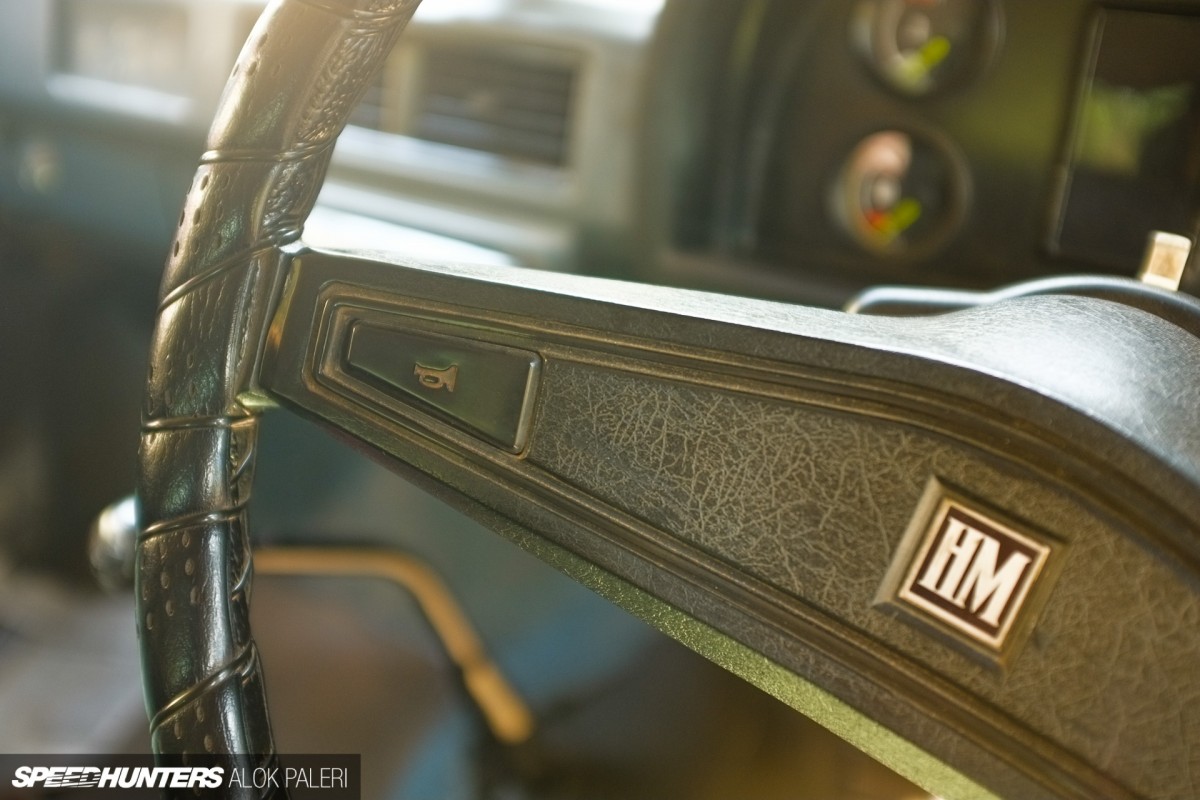
One of the biggest problems with this practice is that, in the event of a true emergency, no one really pays attention to a horn. I firmly believe now that the horn can be used to express nearly anything you want to communicate with a fellow motorist in India.
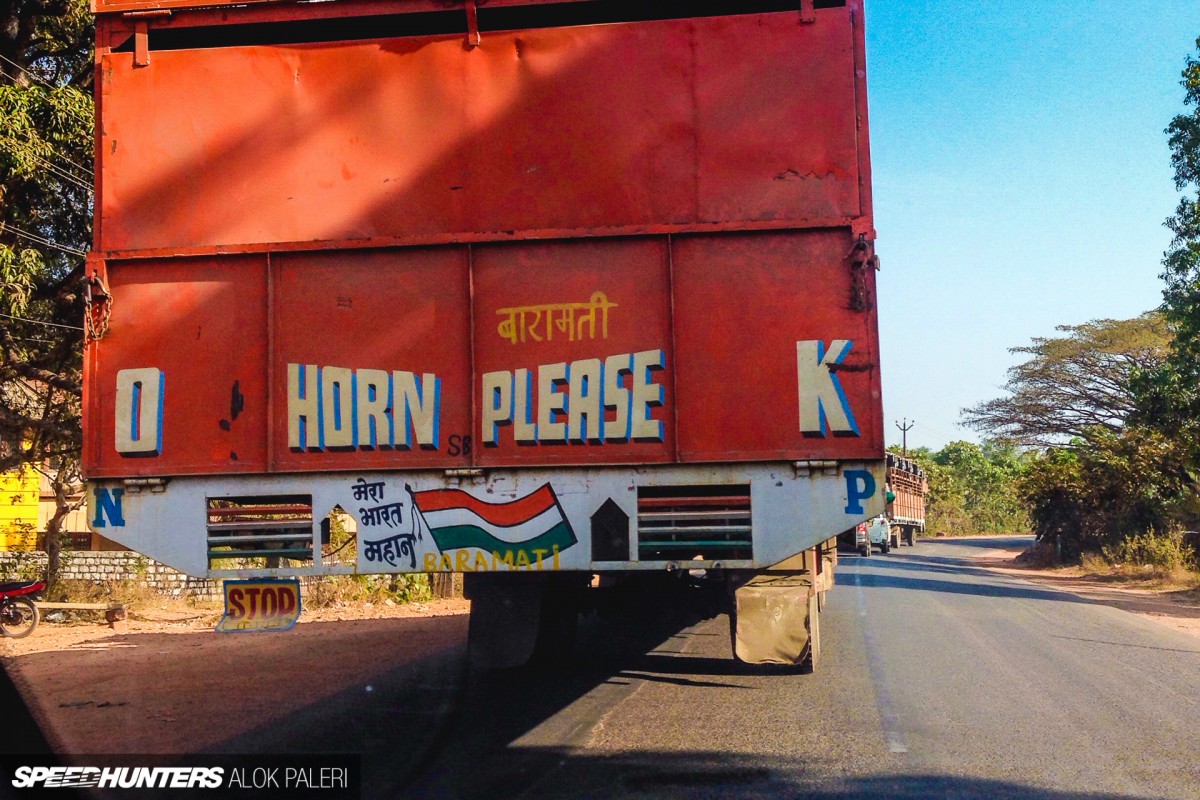
Even trucks and rickshaws have ‘Horn please’ painted across their back. Ever since the early days, horns were a fast-selling accessory for any car.

This Ambassador had bull-bar-mounted external electric horns. People often buy aftermarket horns to set their car apart from others. If you end up in a town during the rush hour or a traffic jam, you can easily make out different melodies all around.
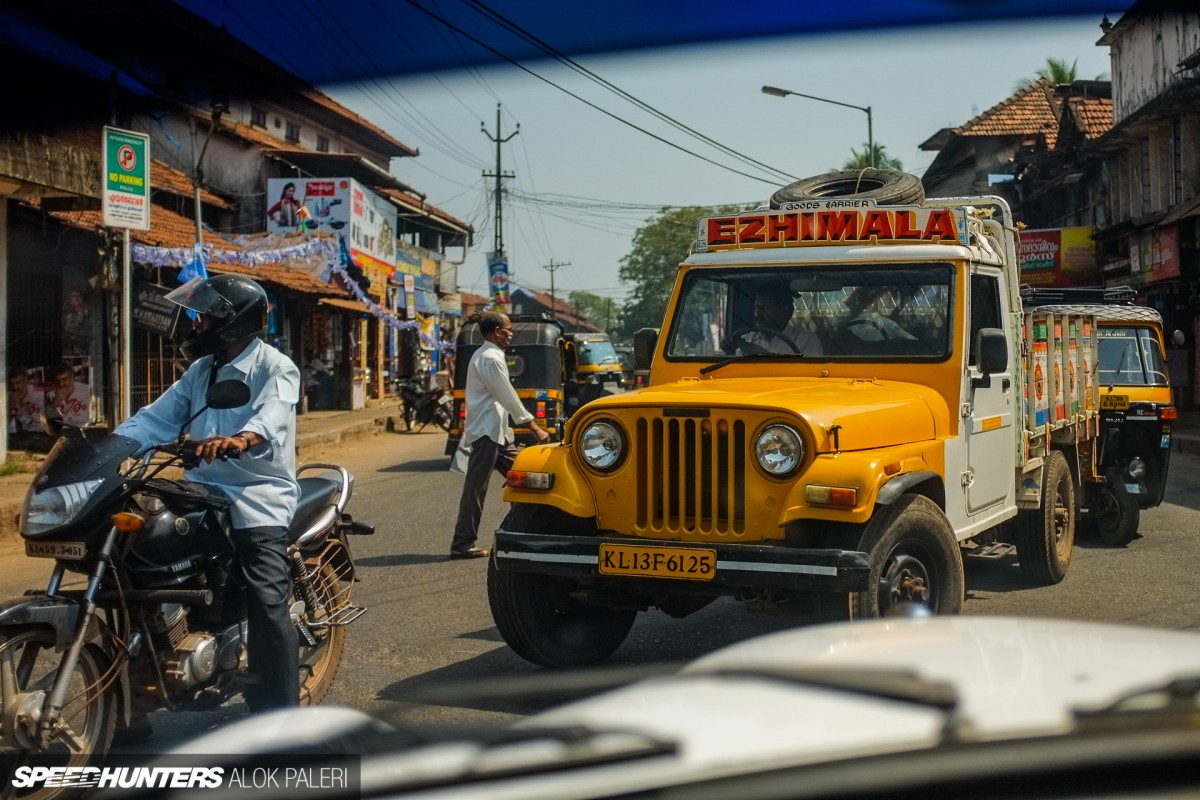
Once you’ve readjusted yourself to the volume, that’s when things kick up a notch and you approach an intersection. Intersections are of the freestyle nature. No traffic policeman, no traffic lights, just pure chaos. Rikshaws and motorbikes have an upper hand here because they fit in smaller gaps than bigger cars and trucks. Pedestrians need an even smaller gap and even they go for it. It isn’t uncommon to see pedestrians crossing through the middle of gridlocks.
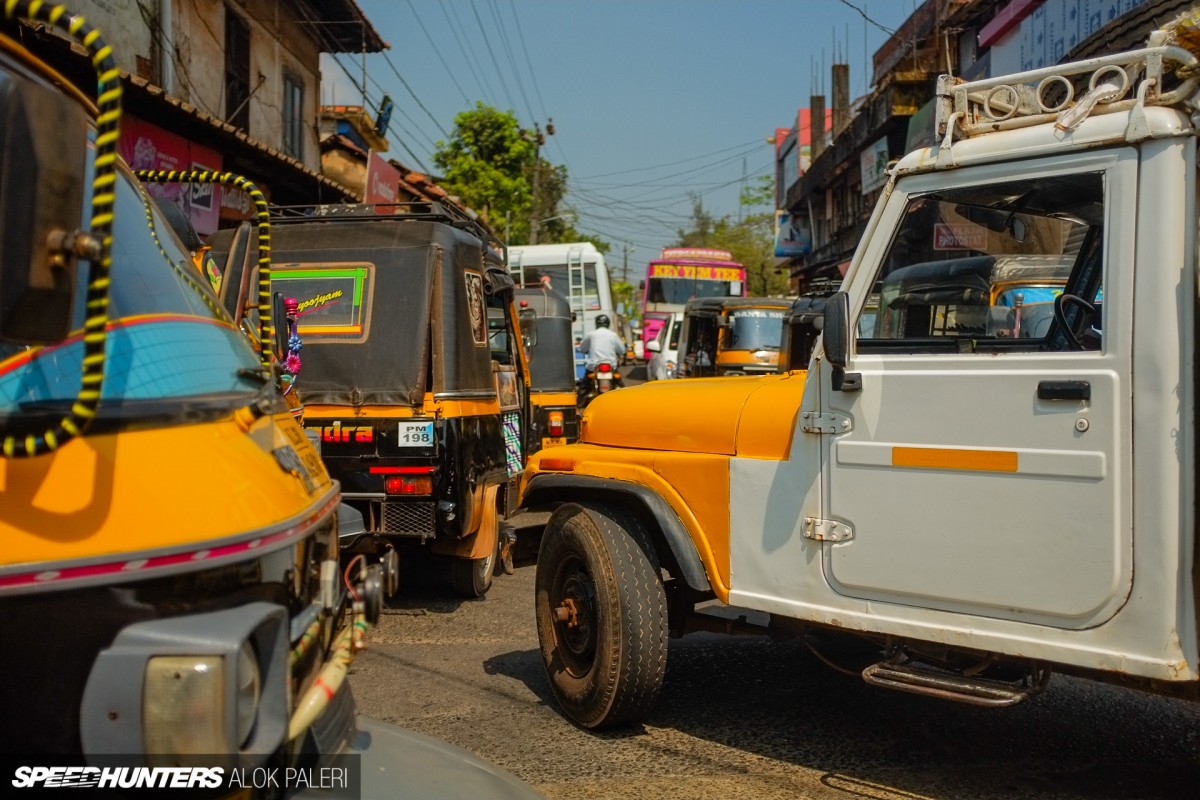
Seeing the guy on the motorbike from the earlier image squeezing through the smallest gap in traffic was interesting to say the least. Everyone seems to be in a hurry to get somewhere, relentlessly honking their horns. It somehow seems to work, sort of like a massive ant colony.
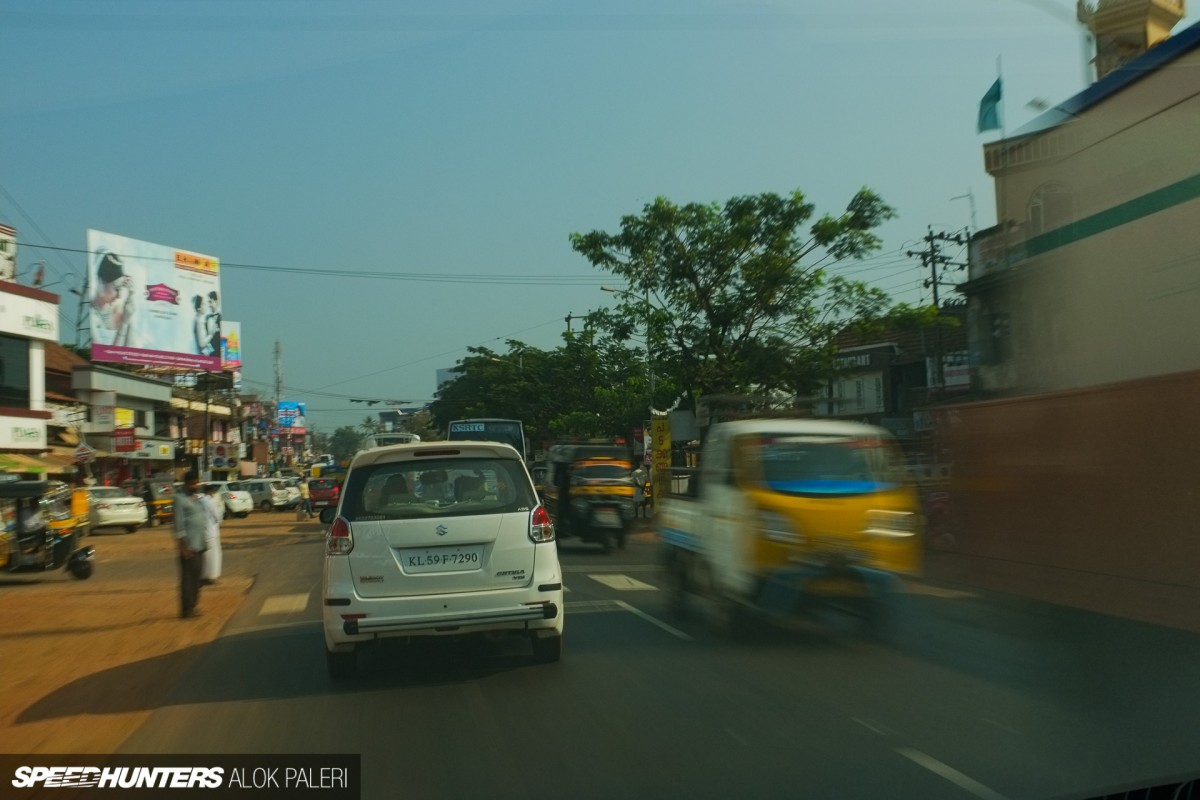
Infrastructure evolves incredibly quickly in developing nations. What was once just the outskirts of town is now packed with businesses. Because there was not much on either side back then, the government was quick to widen the roads here.

Soon after I exited the town, I joined the National Highway 17 that runs roughly north–south along the western coast of India. This is a busy highway used heavily as a trade link so truck traffic is very high. The sight of trucks whooshing past me was majestic, but equalled by the terror of knowing that this car had neither airbags nor a crumple zone.
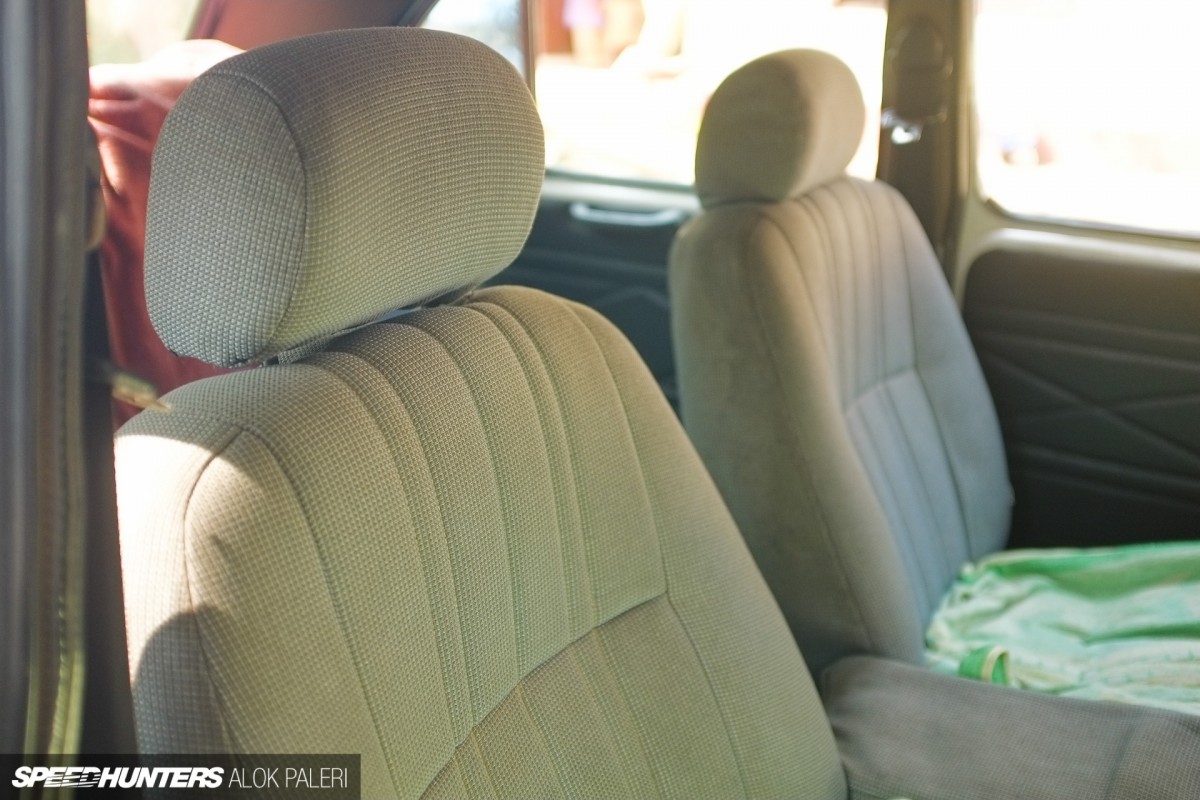
This is the revamped second generation Ambassador that came with seat belts and bucket seats, compared to the ’92 model that had bench seats and no seat belts.

The process of indicating to turn was done during the day using hand signals which were eventually phased out for those newfangled indicators which we have all come to know of – something that’s communicated via stickers on the boot lid. In case you were wondering, power brake tells you that this car is equipped with assisted hydraulic brakes.
The joy of diversity
Kerala is known for its network of rivers and backwaters, so there are bridges around every other corner. This becomes very apparent as soon as you get outside of busy towns.

It also gives you plenty of time to catch your breath occasionally, like an intermittent dose of peace.

In most of the European countries, there’s a minimum speed limit on the motorways. In Germany this is 60km/h. There’s no such thing in India, so with the advent of most modern cars you’re sharing the road with slower-moving rickshaws and two wheelers as well as trucks and faster cars. This can often lead to quite hairy overtaking maneuvers, especially at night.
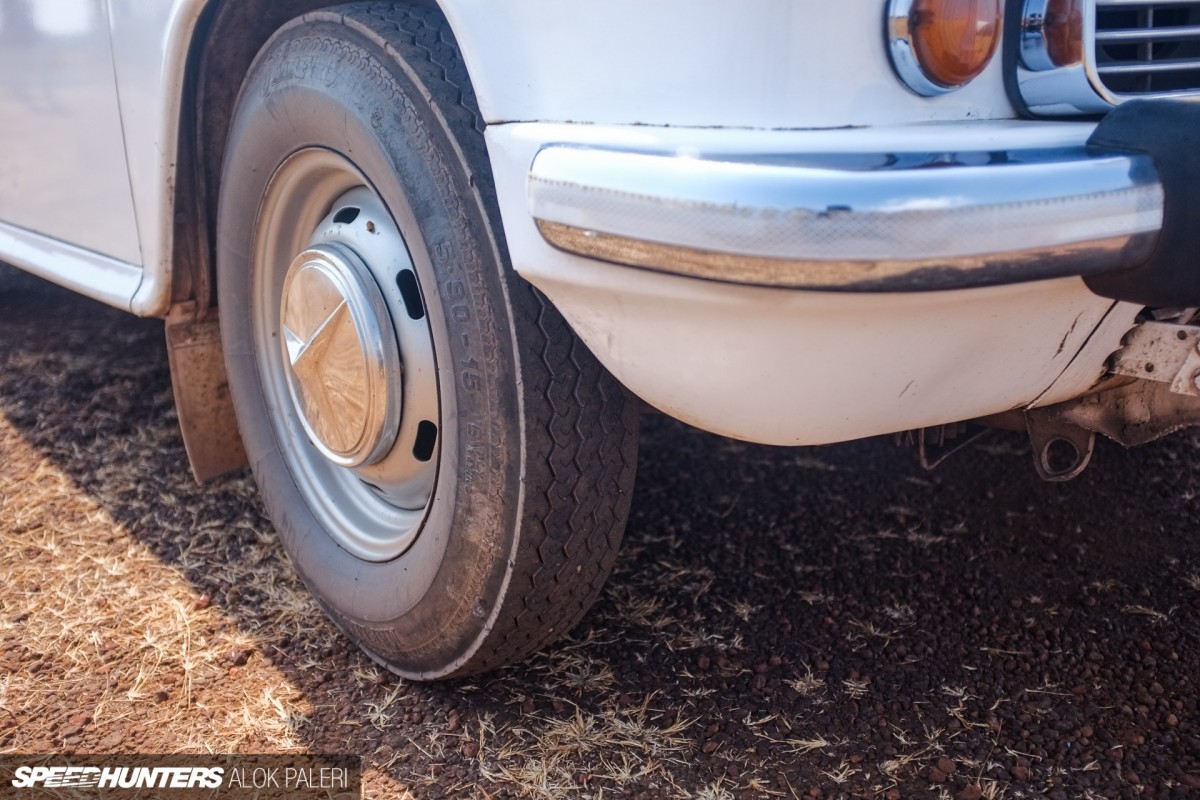
This was a time before the widespread use of radial tires and this Ambassador comes with cross-ply nylon bias tires. They have a fraction of the grip compared to radial tires and when you occasionally run over that road-dirt border I mentioned earlier, you really notice the difference.

Driving through the towns and villages in Kerala really feels like traveling between eras. Often you drive past houses that have been abandoned and fallen completely into disarray. It’s as if time just sped past them paying no notice.

The ‘kera’ in Kerala stands for coconut, and that’s what you see no matter which direction you look – coconut trees everywhere. That, the blue hills and the backwaters are the three trademarks of the state.
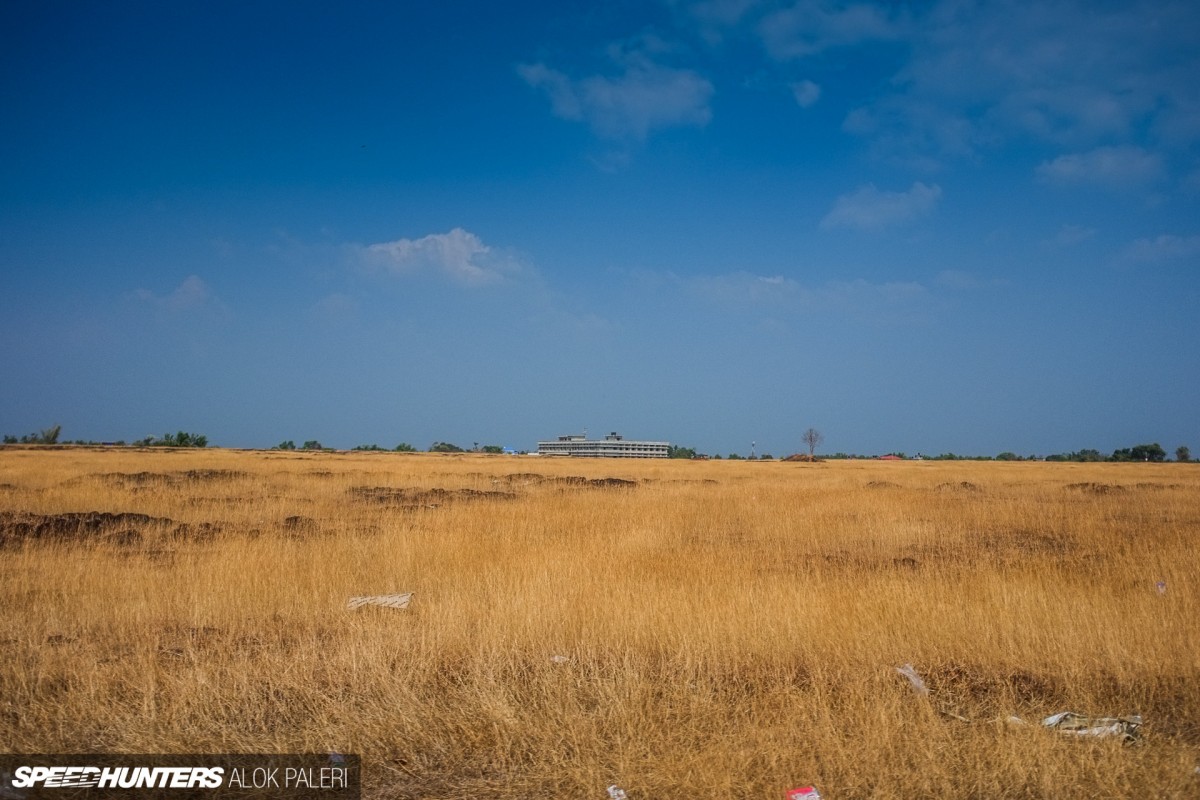
Owing to the geology of the region with prominent bedrock layers, the landscape changes abruptly following elevation changes of just a few dozen meters. As soon as you climb a little higher, the thick greenery disappears almost completely, leaving just dry grass and weeds behind.

Sometimes even the tarmac disappears and you’re left with gravel and rock. Here we are on the top of one of the local hills called Madaippara, or Madai Rock, a volcanic rock formation adjacent to the coast.

The Ambassador was first and foremost built to last on Indian roads. It was a car made to be driven around in on the back seat. It manages to flatten all the irregularities of the pothole-filled Indian roads thanks to traditional semi-elliptical leaf springs at the back. Where it loses on the handling front, it claws back with comfort.

I love how honestly retro some of the fittings on the car are, like the external bonnet hinges.
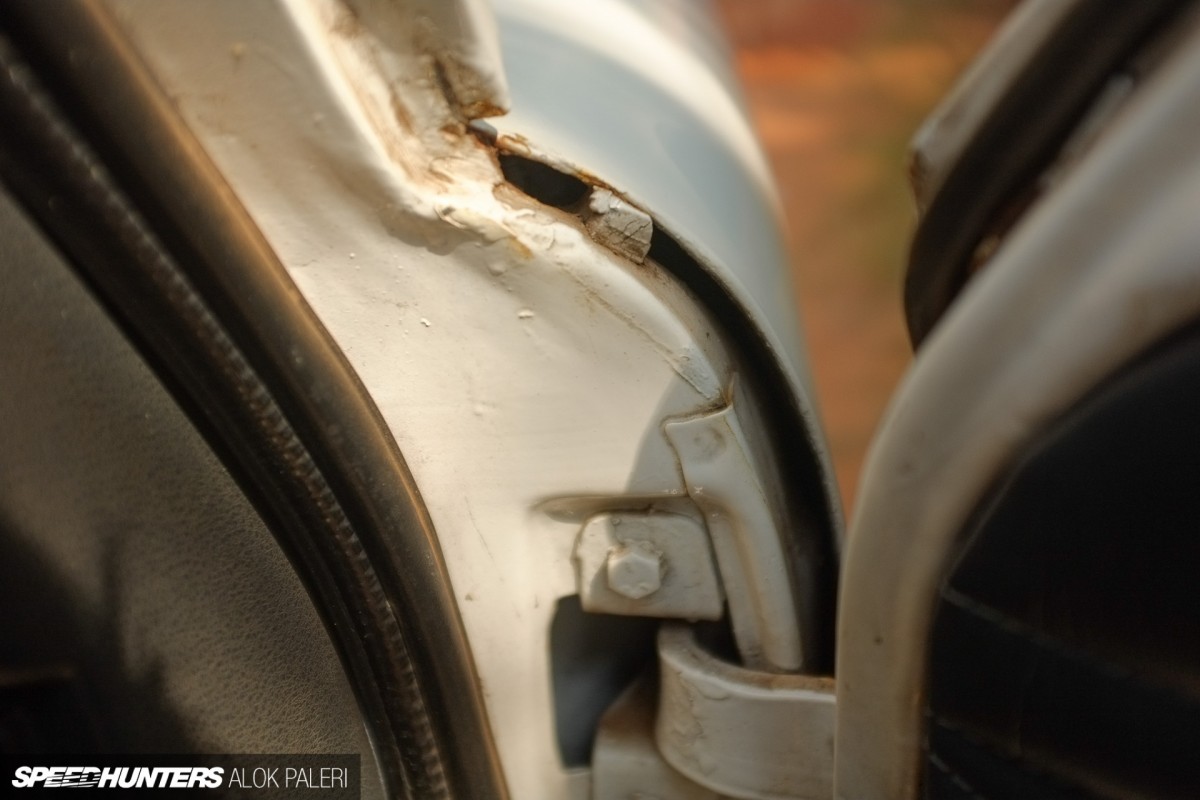
A primitive form of an over fender? I highly doubt it.
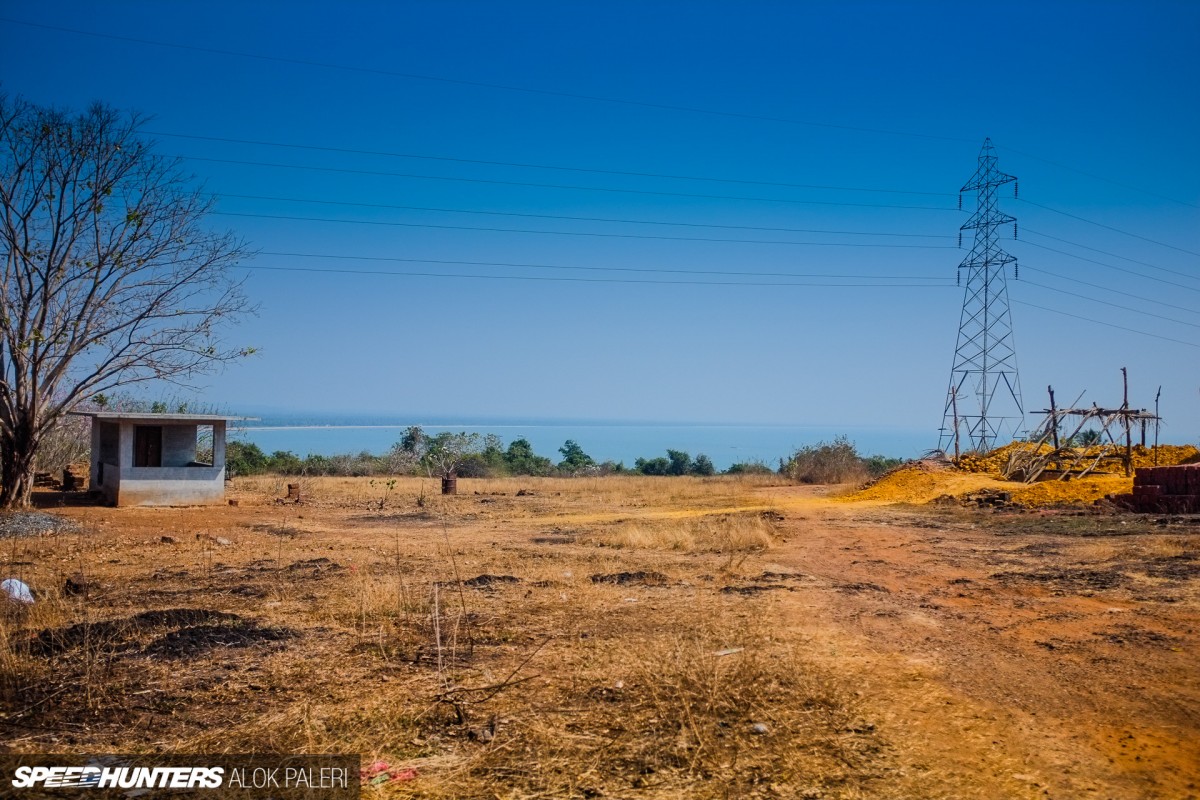
My next destination was the coast and to get there I’d have to drive over to the other side of the hill.

Unlike the drive up the hill which consisted mainly of straight inclines, the way down the other side included a series of hairpin turns. As you get further down, the tree cover increases rapidly, with the picture getting a whole lot greener very quickly.
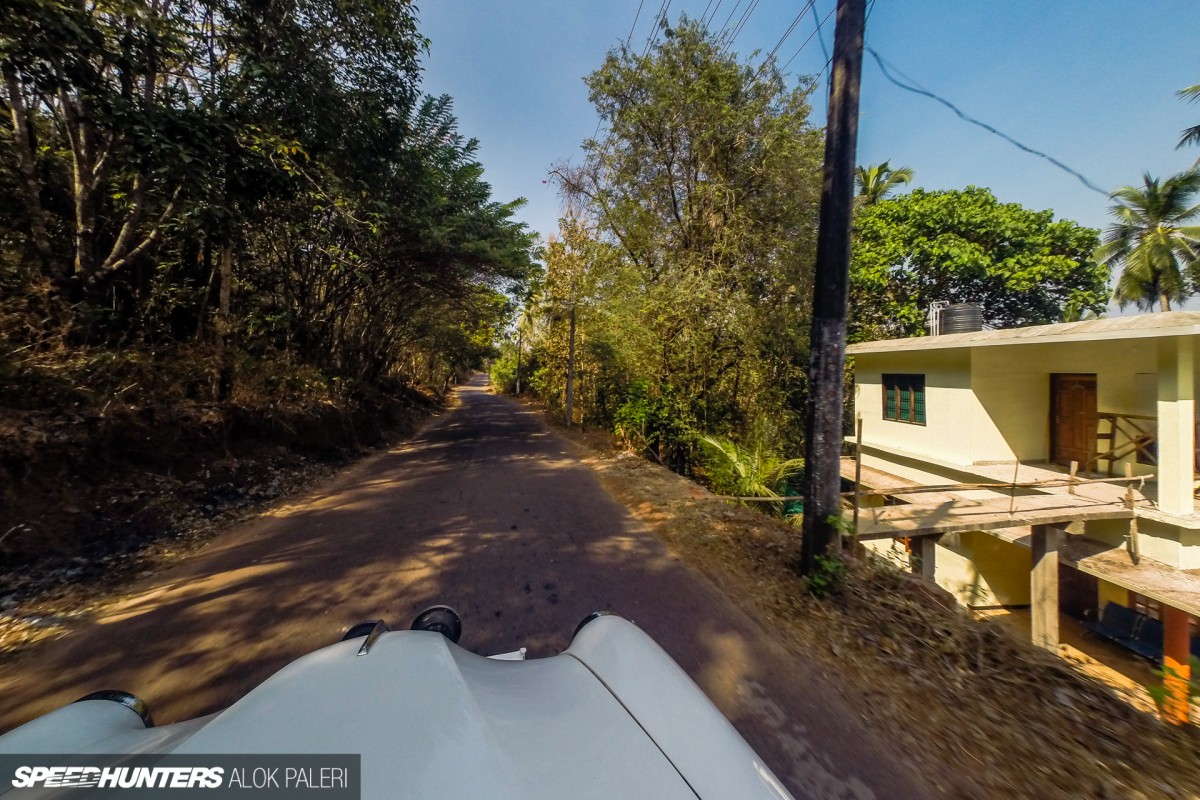
The tree cover also brought shade, which meant I no longer had to squint under the heavy sun.
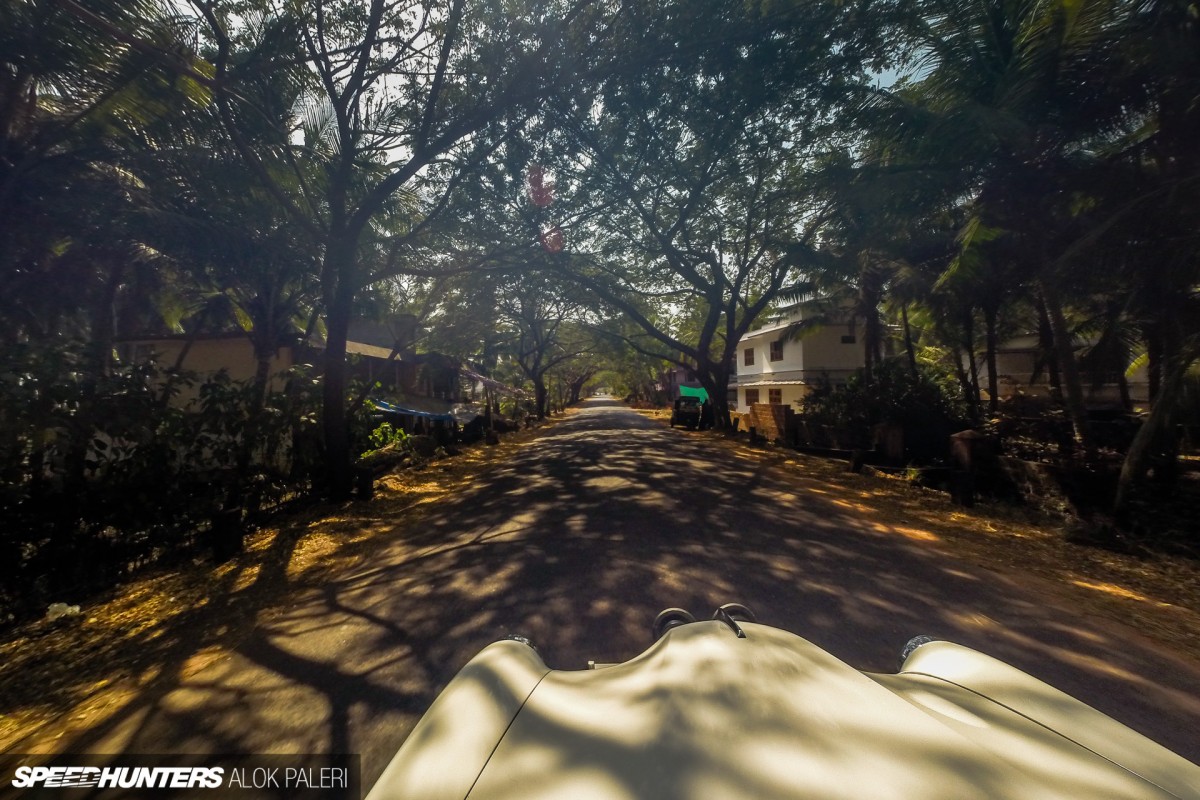
With roads as empty as this and no speed cameras or enforcement whatsoever, I was tempted to just gun it, but even if I did, achieving 80km/h in this car would be a herculean task.

Even if the car could go faster, the road surfacing is so coarse and dimpled that the vibrations would shake the teeth out of anyone attempting it. This is the first time in my life seeing the dashboard of a car moving out of sync with the rest of the body.
Hitting the beach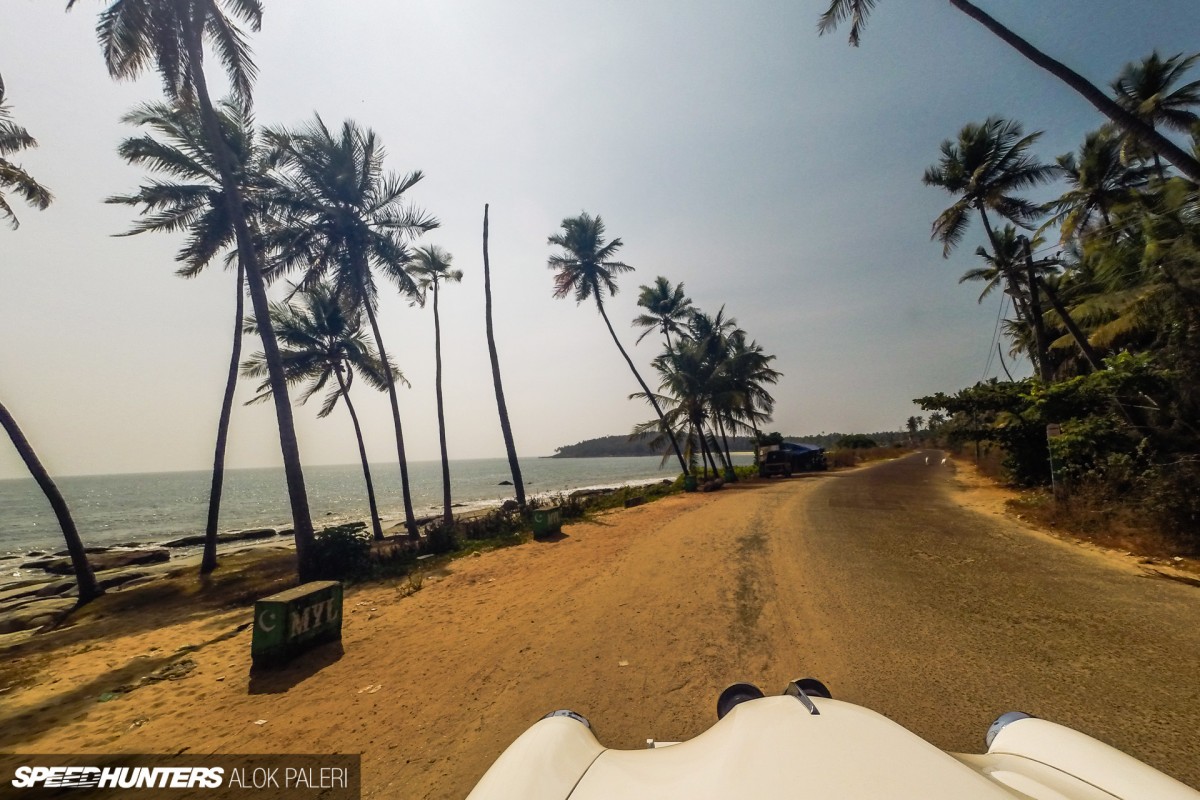
Eventually we reached the coast, here overlooking the Arabian Sea. Notice how the sand has found its way to the road. With a little bit more power this would be a perfect place to let the back end step out. Turns out this road leads directly into a Naval base just a few hundred meters ahead of us, so I had to turn around.
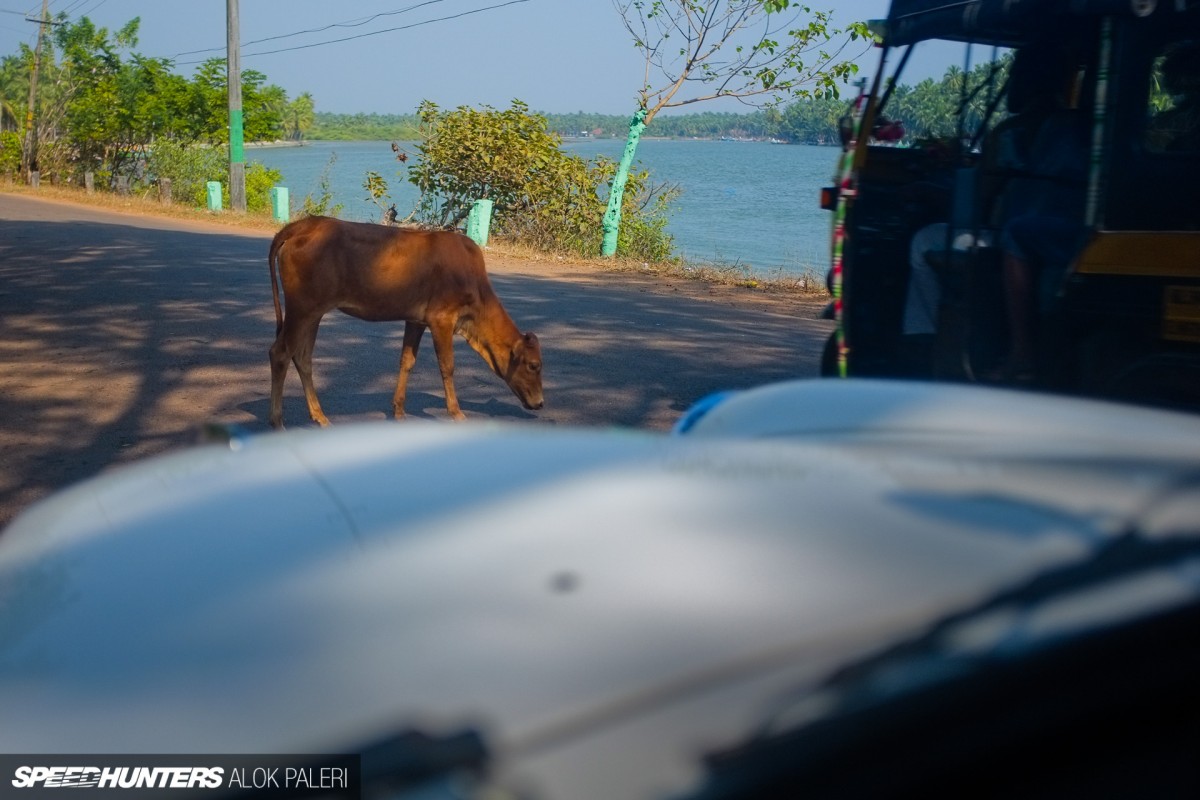
This is yet another thing that happens only in India. Cows just don’t seem to mind a big loud box of metal right in front of them. They seem so impervious to intimidation.

Eventually the road surface got so bad that the best I could do was 20km/h. I wonder how long a sports car would last on this road.
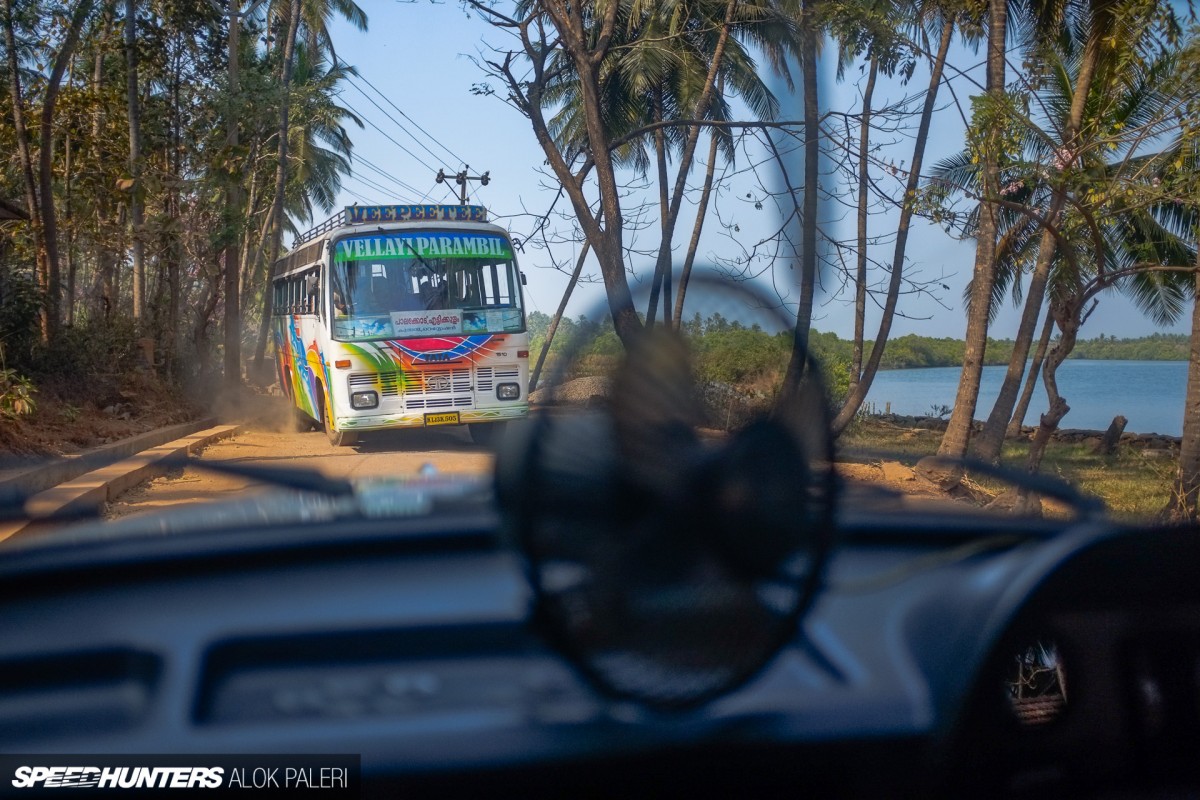
I had just a few seconds to wonder before I saw this bus hurtling towards me. Scenes like these are entirely normal in India when vehicles constantly weave around to avoid potholes that are chunky enough to dislodge most suspension set-ups.
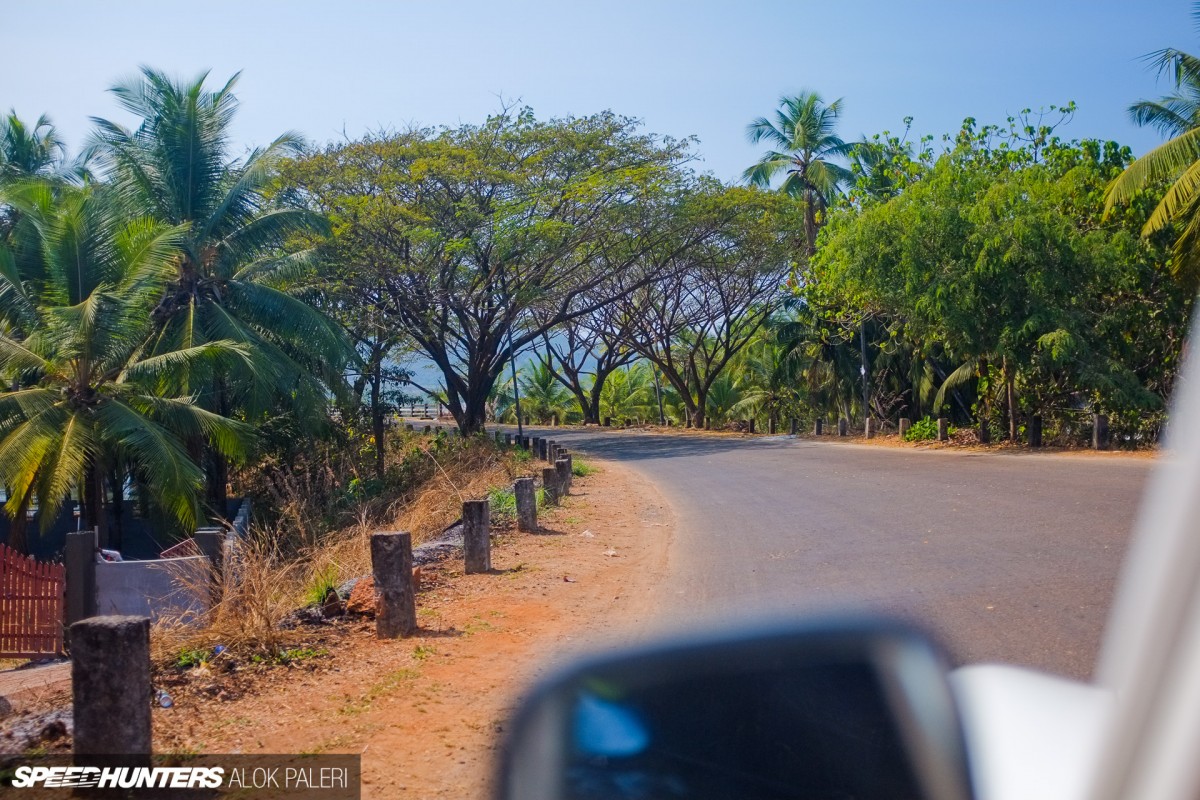
One of the most amazing things about driving in south India is that the landscape shows so much variation.
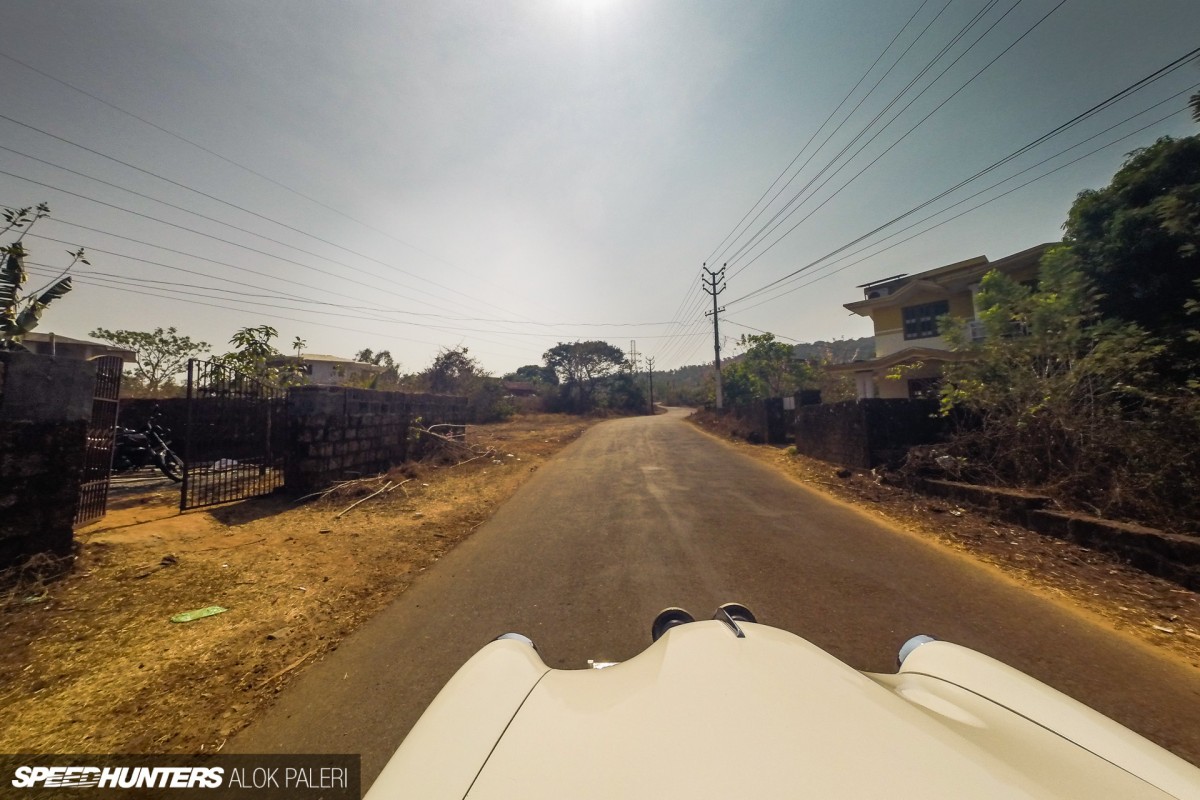
In the span of just a short drive, you’ll come up with rocky dry areas with relatively little vegetation along the road.
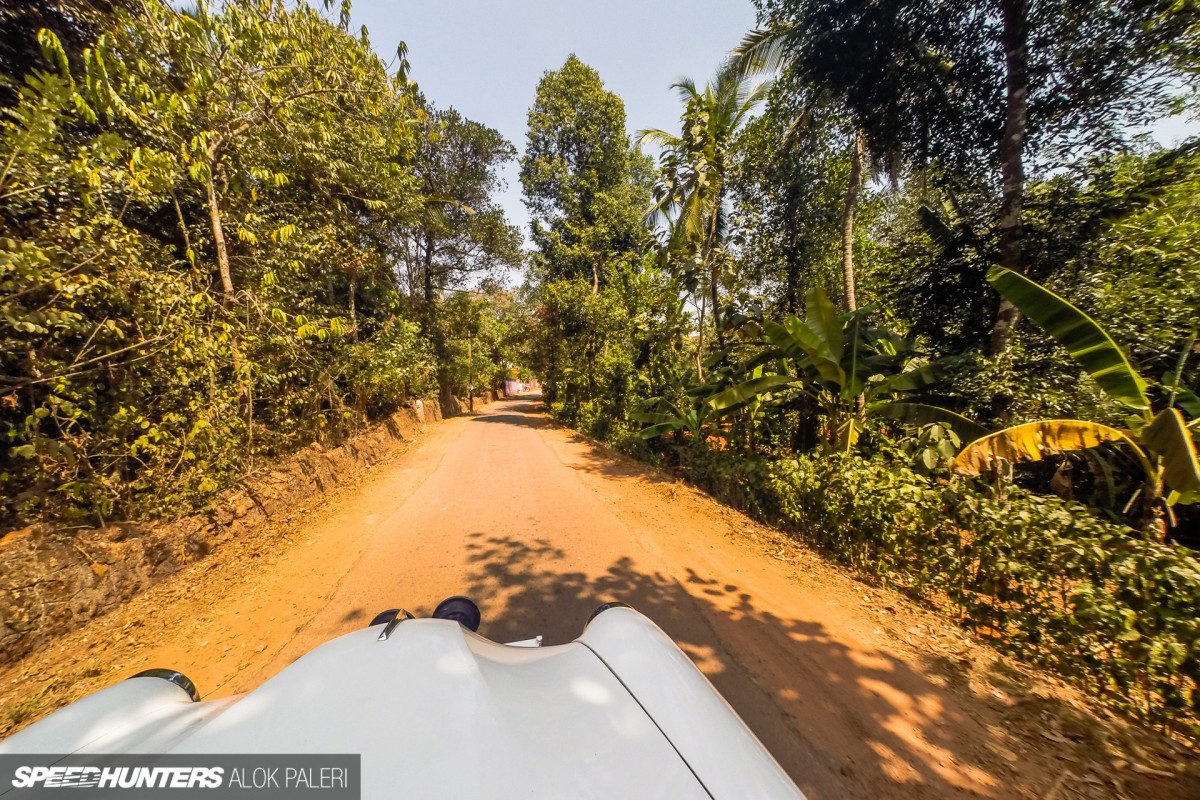
And just round the next hill, you’re surrounded by greenery.

The sheer variation of the environments combined with the chaotic driving style, makes a drive in India a true highlight experience for any motoring enthusiast.

Even the condition of the road varies between extremes, from barely driveable pothole-filled roads to silky smooth ‘rubberized’ highways like these.

It’s a common sight to see vehicles coming towards you on the wrong side of the road and cars overtaking, often three abreast.

During most of the overtaking, the car pulls out to the other extreme of the road to make their intention clear to oncoming traffic and consequently slow them down. This takes a little while to get acquainted to, especially for any unlucky passengers.

Another thing that was immediately obvious in towns was to keep a safe distance. You can’t see the front wheels of a rickshaw from a distance and when they make a U turn – which they do quite often in towns, you’ve got to be careful to not get caught off-guard.
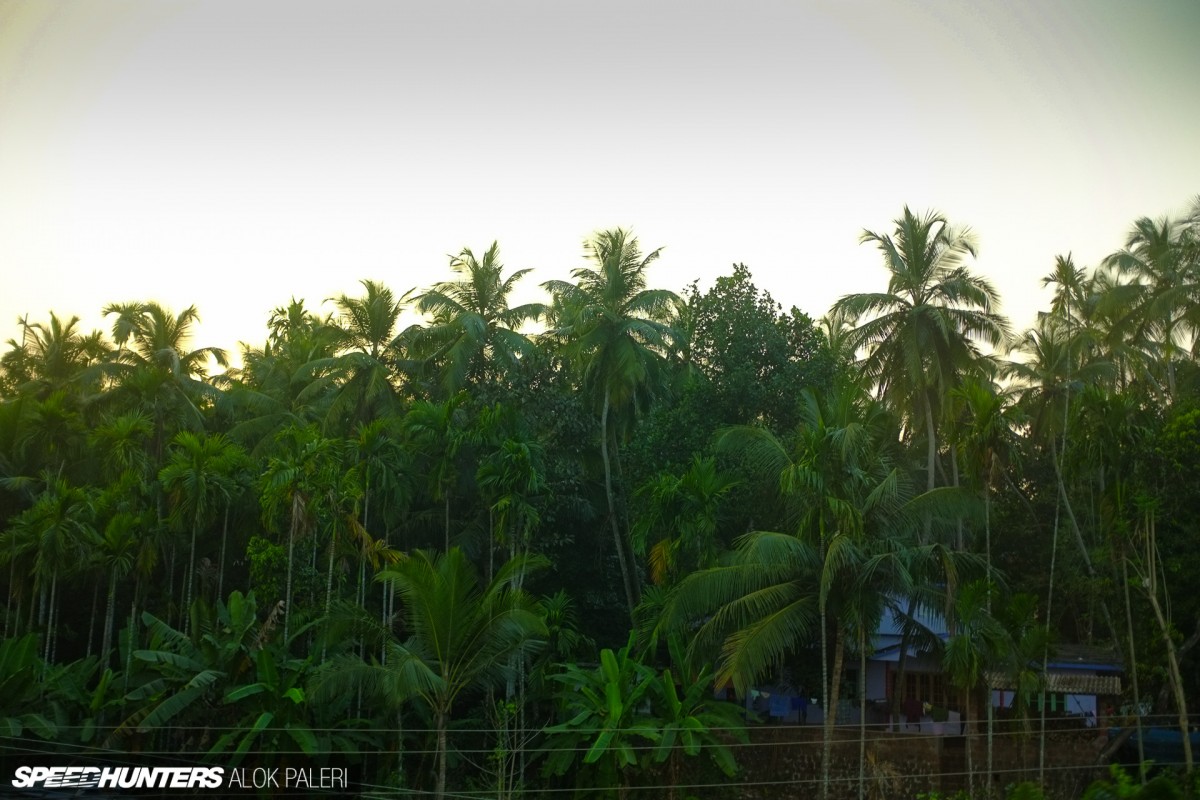
South India has a very humid climate, and the hanging moisture in the air lends to beautiful warm light in the evening hours.

This is an incredibly fast-growing consumer society at this point. The roadsides are filled with enormous billboards advertising textile, jewelry or electronic appliance companies.

New advertising space pops up at every corner that has not yet been occupied.
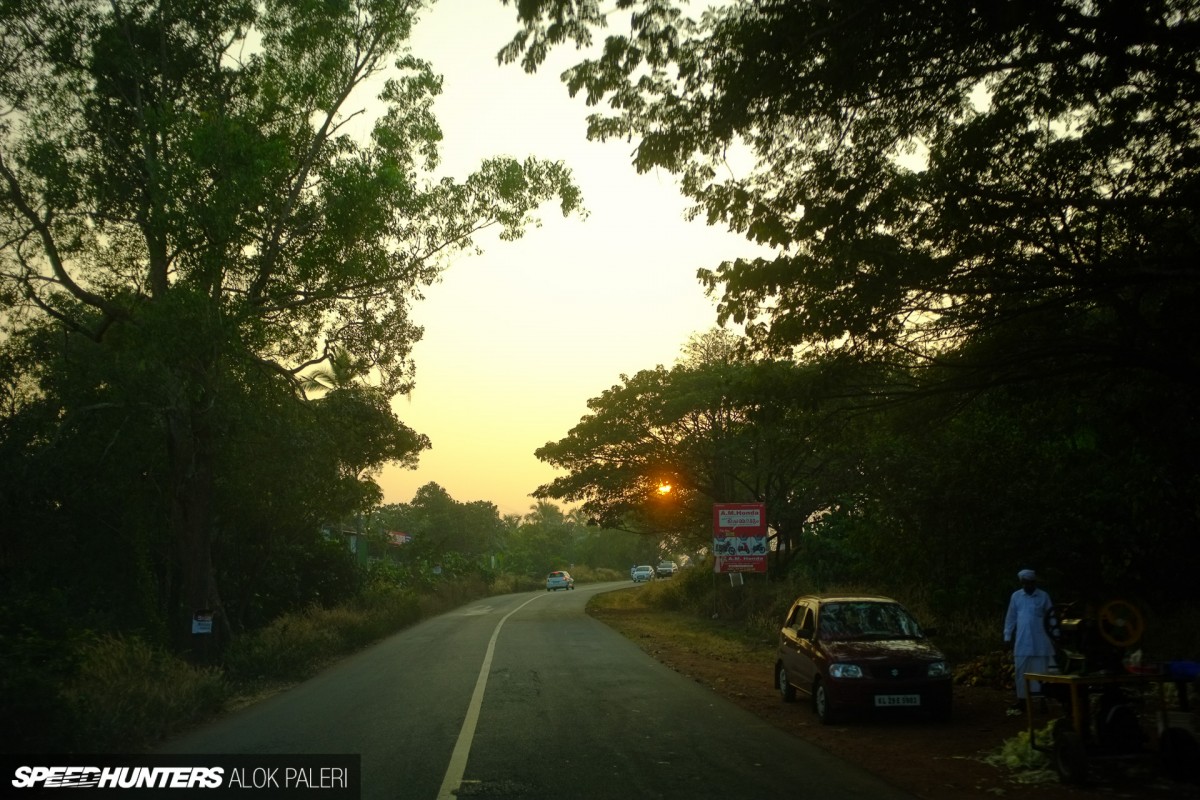
The traffic waned as the sun made its way down the yellow horizon and with my heart still pounding hard, I headed home.

A certain skill set is required to survive Indian roads, and I do mean survive in its very literal sense. The cacophony of horns, heat, dust, varying landscapes and the insane driving style made this one of my most memorable drives ever. I highly recommend this to anyone planning on visiting the subcontinent.
Alok Paleri
Instagram: rennworksmedia
alok@speedhunters.com






Another reminder I need to go to India
Great story Alok - I love the little window into another world that we're not familiar with. The Kerala countryside looks stunning! One thing I'd love to know is what it's like to drive at night there?
SuzyWallace It is beyond words to explain, you have to experience the insanity first hand. I had a couple of colleagues with me in India on this visit and even though they had seen their fair share of automotive action on and off the track in Europe, back in India I saw real fear in their eyes
Speedhunters_Bryn Definitely one for the bucket list!
Beautiful post! My parents were from Trivandrum in Kerala. always wondered what driving was like there. Traffic seems to run very organically....everyone has an understanding of what the other is going to do
always wondered what driving was like there. Traffic seems to run very organically....everyone has an understanding of what the other is going to do
JoshTrippingWords Thanks! Organic is the best word to describe it.
AlokPaleri Haha, I don't believe in bucket lists, just buy the ticket and get on with it
So similar to Philippines
I'm surprised that most indian street are similar with Indonesians. Uneven surface and lots of motorcycles.
Ahh India... A magic place... (Sigh)
Brings back great memories. In 1992 me and a bunch of friends went from Switzerland to India and back in an old Mercedes bus for 6 months. Ambassadors and Marutis were the only cars then, and having a very loud horn was more important than functioning brakes.
koko san Brakes? What brakes? It is hilarious, when your brake pad wears out, it makes a certain squealing sound when you brake. That sound is considered to be normal by many, so it is used as a audio effect along with the screeching sound often in Indian movies when cars brake.
It is hilarious, when your brake pad wears out, it makes a certain squealing sound when you brake. That sound is considered to be normal by many, so it is used as a audio effect along with the screeching sound often in Indian movies when cars brake.
I seem to have found the only car that I will ever beat in a drag race in this article.
It can't be described better...! I reside in Kerala,India and i am testifying that everything you have said is absolutely true.Kerala is in fact the best place ,if anyone of you are planning to visit India.
Cool drive post, it was a nice break from the normal coverage you see on here. That ambassador grew on me more and more with each picture.
Fantastic read! This did a great job of transporting me to India
Great to see something different like this on SH - really neat insight into a country that most of us probably know little about from a driving perspective. Certainly one I'd be interested in visiting at some stage.
This is really cool. Something different too. I like it.
AlokPaleri koko sanOh, and the Premier Padmini (Fiat 1200)
Very cool post. (fellow mallu here)
You missed out the "ok" from the Horn please slogan ; )
You guys should Visit Sri Lanka!
Wow! India is just like the Philippines. LOL!
the 8th pic down from the last page re: the rubberized roads... look at that bus body roll! and i assume its avoiding a pot hole but jeebus lol... i'd throw up from the first 2 mins of reading in that bus. awesome post. its nice to see other parts of the world. i'll stop complaining about the pot holes n shitty traffic in la now. i dont have busses swerving into me from the other direction to piss me off lol
d_rav That and the surface of the road is a little more curved than usual. Have a look here:
About 40s in: http://www.youtube.com/watch?v=KuxggXakRM4
http://www.youtube.com/watch?v=IOXiGFD-YcE
http://www.youtube.com/watch?v=qECydHx0ah8
I spent about a month in Kerala a few years back, it's such a great place, seeing these images just brought it all back to me. The driving is so chaotic that it kinda works because everyone just does their own thing, the traffic just finds it's own natural frequency so things just seem to work somehow...

I'll be expecting a spotlight feature on one of those rickshaws in the near future
I would shit my pants.
As a fellow Keralite, never thought I would see this state covered on Speedhunters! Nice job Alok!
Nice To see an indian coming up on speedhunters.... way to go man ! P.S Cover The Contessa ,...
"It all began when I landed in Frankfurt airport and our taxi driver explained to me that it was mandatory to wear seat belts at all times while being in a car. The relative discomfort of wearing the seat belt quickly got replaced with the initial sheer terror as we drove up the on-ramp onto the autobahn for the first time in my life."
Same thing happened to my family when we first came to the good ol' US of A in the early '90s, but instead of the autobahn it was the "freeway"…we couldn't believe the legal speed at first, but got used to it fairly quick. I even got my first speeding ticket years later when I first started to drive.
Great article by the way. Wish there was more to the car tho, but the scenery makes up for it.
AlokPaleri d_ravmy god. would it be safer to zip around in a scooter around town then??? sheesh!
Isn't it more of a test of you patience?
About time Now we need some Mexico. And an Ambassador lowered on a set of mega dished Minilites.
Now we need some Mexico. And an Ambassador lowered on a set of mega dished Minilites.
This story was very unlike what I am used to for Speedhunters and I thoroughly enjoyed it. Thanks!
wow very nice story. Very well written. Thanks for sharing
I propose a tg style challenge: tuner gp, no first world cars allowed. ambassadors, trabbies, zasatvas, but also licence manufacture renault 4, old beetle etc. events to include drag, drift, circuit race, burnout pit and fabricate major mechanical component from agricultural scrap.
nice too India making it onto Speedhunters!
As an Indian myself, and having our manufacturing roots (and still a factory) there.. I really enjoyed this article as well. It would be nice for Speedhunters to see (and show their readers) the new side of automotive culture in India (super high end). Great story! Great job!
If I had a cute little Amby, I'd do it like a 1949 Mercury.